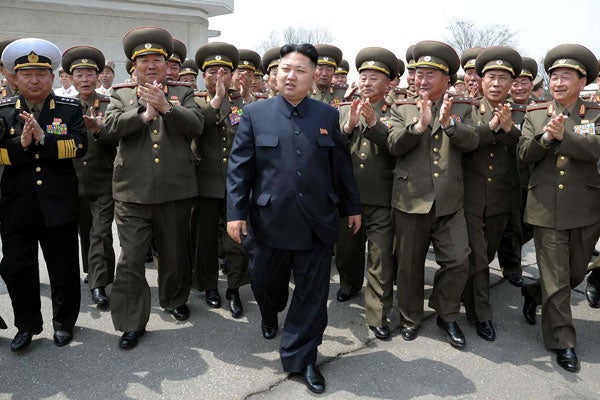Pyongyang again disobeyed international efforts to rein in the recalcitrant regime by conducting its third nuclear test. North Korea announced it successfully conducted a test of a “miniaturized and lighter nuclear device with greater explosive force than previously.” Coupled with its successful launch of a long-range missile in December 2012, Pyongyang has achieved another breakthrough in its decades-long quest to threaten the United States with nuclear weapons.
The nuclear test comes less than a month after the United Nations again demanded North Korea “comply fully with its obligations [to] abandon all nuclear weapons and existing nuclear programs” and not conduct any further nuclear tests. Chinese resistance prevented more meaningful punishment for North Korea’s missile launch, though the U.N. meekly “expresse[d] its determination to take significant action in the event of a further DPRK launch or nuclear test.”
Details of the nuclear test remain unknown, but seismic detection agencies confirmed “the event shows clear explosion-like characteristics and its location is roughly congruent with the 2006 and 2009 DPRK nuclear tests.” The detected 4.9 magnitude of the test is larger than North Korea’s two previous nuclear tests. The South Korean Ministry of Defense preliminarily concluded the test may have been 6 to 7 kilotons, larger than the 2006 and 2009 tests, which were 1 kiloton and 4 kilotons, respectively.
It is yet unknown whether the test used plutonium (as in previous tests), uranium, or boosted plutonium (thermonuclear). A uranium test would show that Pyongyang has achieved a second path to nuclear weapons program, while a boosted plutonium weapon could provide significantly greater explosive yields or an expanded nuclear arsenal, since less plutonium is required per weapon.
What is clear is that North Korea has again defied the U.N. Security Council as well as recent efforts by China to prevent its troublesome neighbor from ratcheting up tension on the Korean Peninsula. Kim Jong-un has shown himself to be no less belligerent and dangerous than his predecessors. Kim is also clearly willing to risk incoming South Korean President Park Geun-hye’s nascent efforts to re-engage North Korea, just as Kim Jong-il rejected President Obama’s similar attempts in 2009.
Attention will now turn to Washington to see if the Obama Administration lives up to its promise of significant repercussions for Pyongyang so blatantly and quickly disregarding the latest U.N. resolution. The U.S. must again return to the U.N. Security Council but more strongly press China for effective sanctions.
Washington should insist that the next U.N. resolution include Chapter VII, Article 42 of the U.N. Charter, which allows for enforcement by military means. This would enable naval ships to intercept and board North Korean ships suspected of transporting precluded nuclear, missile, and conventional arms, components, or technology.
Because the U.N. Security Council has fallen victim to Chinese obstructionism, it is past time for the United States to initiate unilateral action and call upon other nations to follow. The Obama Administration should publicly identify and target all North Korean and other nations’ banks, businesses, and government entities culpable in violating U.N. resolutions and international law.
The increasing North Korean nuclear threat to the United States clearly demonstrates the need for enhanced allied missile defense systems as well as robust forward-deployed military forces to deter aggression. Ironically, however, the United States is about to impose even more drastic cuts onto the U.S. military unless it can avert the impending sequestration.
